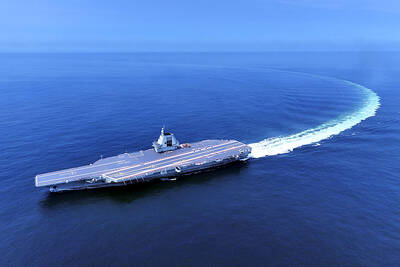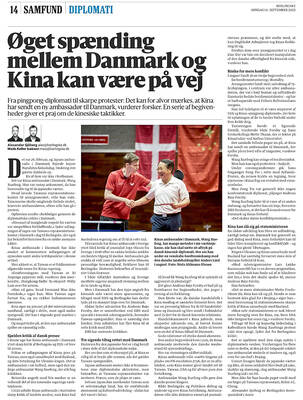Although Taiwan's Indigenous Defense Fighter (IDF) has an emergency function that minimizes the chance of a plane crash due to human error, pilots have only now found out about it.
The previous two accidents involving IDFs this year were caused by human error, defense sources said yesterday.
The state-run Aerospace Industrial Development Corporation (AIDC), the developer of the plane, reminded the air force of the manually controlled function after realizing what had caused the two IDF crashes.
The function, which is to be activated only in an emergency, could help the plane recover from near loss of control caused by improper piloting, AIDC officials said.
According to defense sources the crashes had a lot to do with improper piloting on the part of the flight instructor.
Both of the planes were twin-seat trainers, which carried a trainee in the front seat and a flight instructor in the back.
Air force investigations indica-ted that the first IDF crash, which occurred in April, was caused by the flight instructor maneuvering the plane in such a way that a negative G-force was created, a senior air force official said.
The instructor caused the negative G-force as punishment when the trainee failed to carry out instructions. The trainee lost control of the plane after repeated interruptions from the back-seat pilot. The plane crashed, but both pilots survived by ejecting.
The second crash, in Septem-ber, had a similar cause, said Erich Shih (
"The crash was also caused by the negative G-force which the flight instructor created intentionally to punish the trainee. It is incredible that the same mistake could be repeated again and again," Shih said. He quoted what he called reliable sources.
The crashes dealt a heavy blow to the air force, which had been taking pride in the IDF's relatively accident-free history, especially compared with other fighter planes such as the US-made F-16 and French Mirage 2000-5.
The latest crashes have brought the IDF fleet in line with the F-16s and Mirage 2000-5s as far as the air force's accident rate is concerned.
A total of three IDFs have crashed since the air force started using them, while four of the F-16s and three Mirage 2005-5s have crashed.
In an attempt to prevent similar accidents in future, the air force has asked the AIDC to help teach pilots how to use the fighter's emergency function.
The air force general headquarters yesterday declined to comment on the issue, saying it is not proper to discuss this in public.

The Coast Guard Administration (CGA) yesterday said it had deployed patrol vessels to expel a China Coast Guard ship and a Chinese fishing boat near Pratas Island (Dongsha Island, 東沙群島) in the South China Sea. The China Coast Guard vessel was 28 nautical miles (52km) northeast of Pratas at 6:15am on Thursday, approaching the island’s restricted waters, which extend 24 nautical miles from its shoreline, the CGA’s Dongsha-Nansha Branch said in a statement. The Tainan, a 2,000-tonne cutter, was deployed by the CGA to shadow the Chinese ship, which left the area at 2:39pm on Friday, the statement said. At 6:31pm on Friday,

The Chinese People’s Liberation Army Navy’s (PLAN) third aircraft carrier, the Fujian, would pose a steep challenge to Taiwan’s ability to defend itself against a full-scale invasion, a defense expert said yesterday. Institute of National Defense and Security Research analyst Chieh Chung (揭仲) made the comment hours after the PLAN confirmed the carrier recently passed through the Taiwan Strait to conduct “scientific research tests and training missions” in the South China Sea. China has two carriers in operation — the Liaoning and the Shandong — with the Fujian undergoing sea trials. Although the PLAN needs time to train the Fujian’s air wing and

The American Institute in Taiwan (AIT) put Taiwan in danger, Ma Ying-jeou Foundation director Hsiao Hsu-tsen (蕭旭岑) said yesterday, hours after the de facto US embassy said that Beijing had misinterpreted World War II-era documents to isolate Taiwan. The AIT’s comments harmed the Republic of China’s (ROC) national interests and contradicted a part of the “six assurances” stipulating that the US would not change its official position on Taiwan’s sovereignty, Hsiao said. The “six assurances,” which were given by then-US president Ronald Reagan to Taiwan in 1982, say that Washington would not set a date for ending arm sales to Taiwan, consult

A Taiwanese academic yesterday said that Chinese Ambassador to Denmark Wang Xuefeng (王雪峰) disrespected Denmark and Japan when he earlier this year allegedly asked Japan’s embassy to make Taiwan’s representatives leave an event in Copenhagen. The Danish-language Berlingske on Sunday reported the incident in an article with the headline “The emperor’s birthday ended in drama in Copenhagen: More conflict may be on the way between Denmark and China.” It said that on Feb. 26, the Japanese embassy in Denmark held an event for Japanese Emperor Naruhito’s birthday, with about 200 guests in attendance, including representatives from Taiwan. After addressing the Japanese hosts, Wang